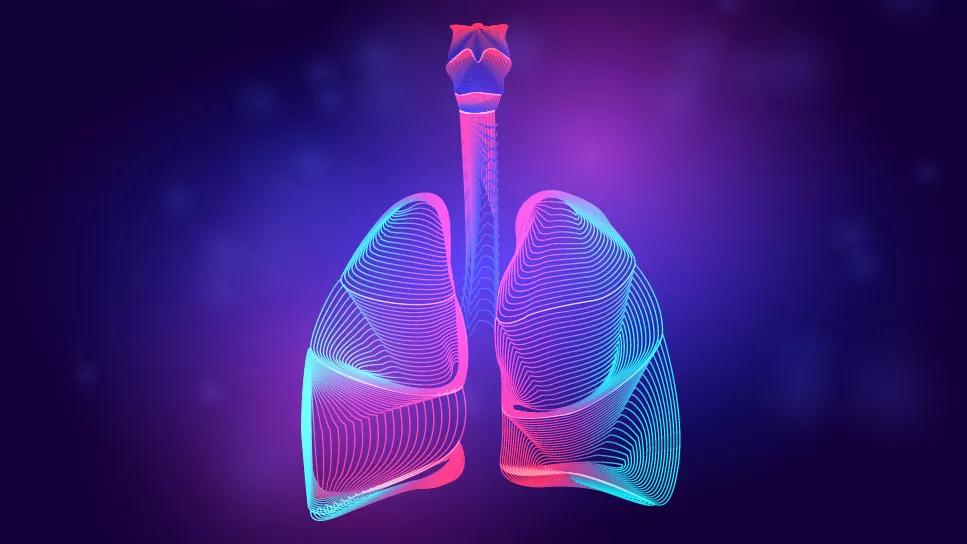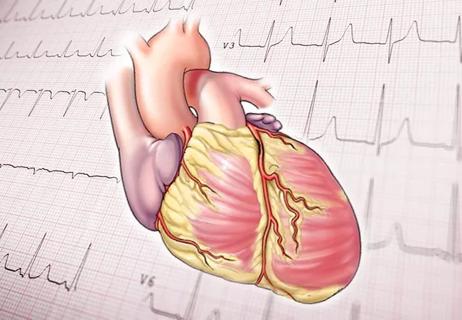Volatile organic compounds have potential in heart failure diagnostics

A recent analysis — spearheaded by Cleveland Clinic’s Respiratory Institute Chair, Raed Dweik, MD, and Wai Hong Wilson Tang, MD, a staff cardiologist in the Heart, Vascular & Thoracic Institute at Cleveland Clinic — demonstrates the value of profiling exhaled gas patterns for risk stratification in congestive heart failure (CHF) patients. These findings, recently published in the journal Metabolites, suggest that exhaled acetone and pentane are novel biomarkers that warrant further exploration in this patient population.
Advertisement
Cleveland Clinic is a non-profit academic medical center. Advertising on our site helps support our mission. We do not endorse non-Cleveland Clinic products or services. Policy
“Our previous work revealed that patients with heart failure have their own unique ‘breathprint,’” says Dr. Dweik, while discussing what led to the current study. “Exhaled breath volatile organic compounds (VOCs) are elevated in heart failure; however, VOCs and their ability to predict long-term cardiovascular mortality and morbidity have not been fully investigated.”
Several studies have correlated elevated levels of nitric oxide, pentane and acetone in the exhaled breath to patients with CHF. However, very few of these papers examined how the level of exhaled VOCs correlated with a patient’s clinical changes or functional capacity. Drs. Dweik and Tang initiated the current research effort, which involved exhaled breath analysis using selected ion flow tube mass spectrometry (SIFT-MS), to prospectively study exhaled acetone and pentane profiles in heart failure patient populations.
This single-center, prospective clinical study included patients with acute decompensated heart failure (ADHF) and hypervolemia (ADHF cohort). They were admitted to the Cleveland Clinic between July 2012 and July 2013 with worsening signs and symptoms due to increasing congestion requiring diuresis.
Among these patients, the researchers measured exhaled breath acetone and pentane levels at the time of hospital admission and again after 48 hours of diuresis. In a separate cohort that included 51 cardiac patients undergoing cardiopulmonary exercise testing (CPET), exhaled breath acetone and pentane levels were measured before and at peak exercise.
Advertisement
Patients with a history of heart failure or cardiomyopathy were included in both cohorts. Individuals who were unable to perform the exhaled breath analysis maneuvers or were active cigarette smokers were excluded from the study.
In the ADHF cohort, serial exhaled VOC levels were collected from 55 patients. Among these patients, researchers reported baseline median exhaled acetone and pentane levels of 190.5 μg/L (interquartile ranges (IQR) 67.4 μg/L to 443.3 μg/L) and 17.2 μg/L (IQR 10.6 μg/L to 25.1 μg/L), respectively.
Data revealed that higher exhaled breath acetone levels are associated with lower left ventricular ejection fraction (LVEF) and poorer outcomes in patients with ADHF, according to Dr. Dweik and colleagues. Additionally, the researchers also found that greater reductions in exhaled breath acetone and pentane are correlated with greater weight loss, a surrogate marker for effective diuresis.
A significantly greater percentage reduction in acetone (59% reduction versus 7% increase) and pentane (23% reduction versus 2% reduction) was observed among ADHF patients with above-median weight loss (≥ 4.5 kg).
In the CPET cohort, the analysis showed that higher pre- and post-exercise exhaled acetone and pre-exercise exhaled pentane levels are associated with higher VE/VCO2. However, no significant correlations were observed between baseline or peak exercise acetone and pentane levels and peak VO2.
Drs. Dweik and Tang, alongside their colleagues, also explored the relationship between exhaled VOC and long-term outcomes. In the ADHF cohort, they observed a 38% mortality rate. Seven percent of patients received ventricular assist devices (VAD) and 11% received orthotopic heart transplantation (OHT). Among patients in the CPET group, the mortality rate was 16%. Two percent and 6% of the patients received VAD and OHT, respectively.
Advertisement
“In longitudinal follow-up with a median duration of 33 months, patients with elevated exhaled acetone and pentane levels experienced higher composite adverse events of death, ventricular assist device implantation, or orthotopic heart transplantation,” the study authors report.
Collectively, these findings support the role of VOCs as potential biomarkers in heart failure diagnostics, therapeutics and prognostication, according to Dr. Tang, who notes that “with serial sampling, we were able to monitor how VOC levels change in these patients as they have clinical improvements. Our work highlights the potential of this approach as a disease monitoring technique.”
With SIFT-MS, exhaled breath analysis can be performed in real-time in the hospital setting, adds Dr. Dweik. “Like other clinically applicable exhaled breath measurements, the true promise lies in the potential for point-of-care and ambulatory monitoring and screening. Once clinically relevant VOCs are identified, highly sensitive and specific solid-state sensors can be integrated into portable detectors.”
While both Drs. Dweik and Tang acknowledge that the research is still very much in the “conceptual” phase, the current study lays the groundwork for further investigations that could have significant implications for clinical care in the future.
Advertisement
Advertisement

Experts are challenging the one-size-fits-all paradigm

Decongestion, therapy titration and readmission rates comparable to those with traditional hospital care

Panel proposes staging and treatment protocols that support harmonized evaluation and management of heart failure in patients with congenital heart disease

Eminent clinician-researcher brings special expertise in nutritional interventions for heart failure

Recent volume and outcomes data in two major realms of cardiovascular care

Basic understanding of condition and treatment is lacking

Indications and issues concerning cardiac resynchronization therapy, conduction system pacing

First-in-world implantation performed at Cleveland Clinic